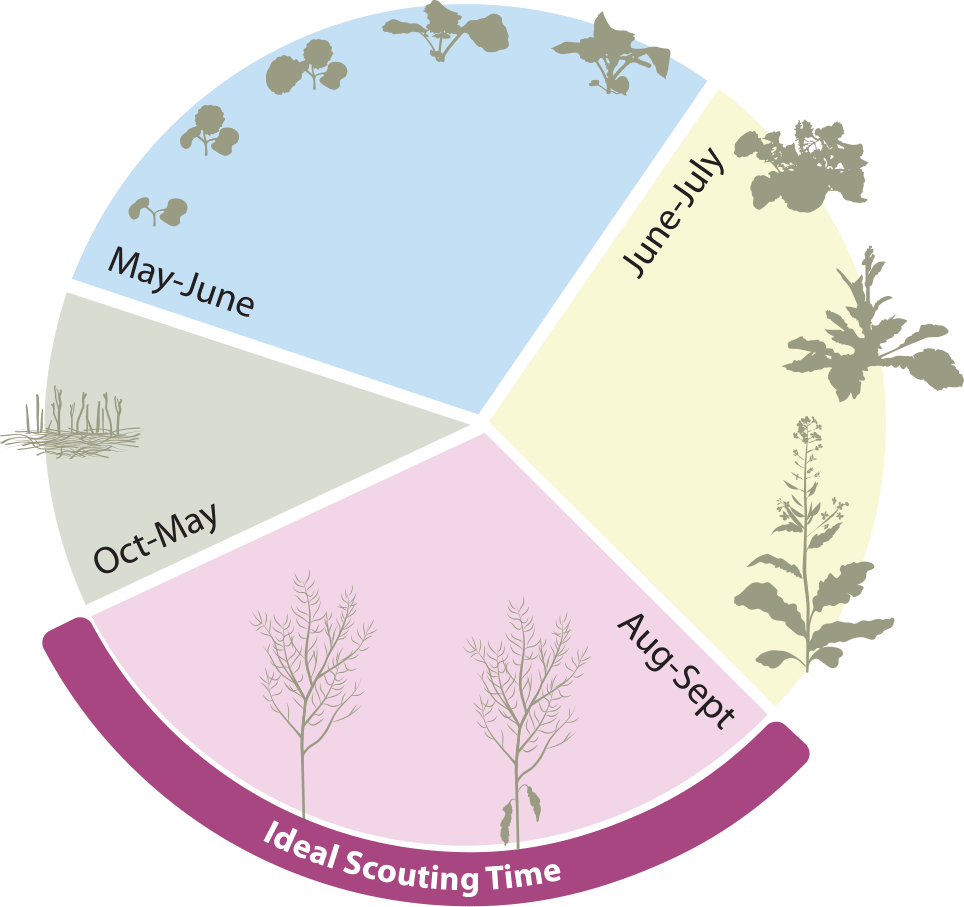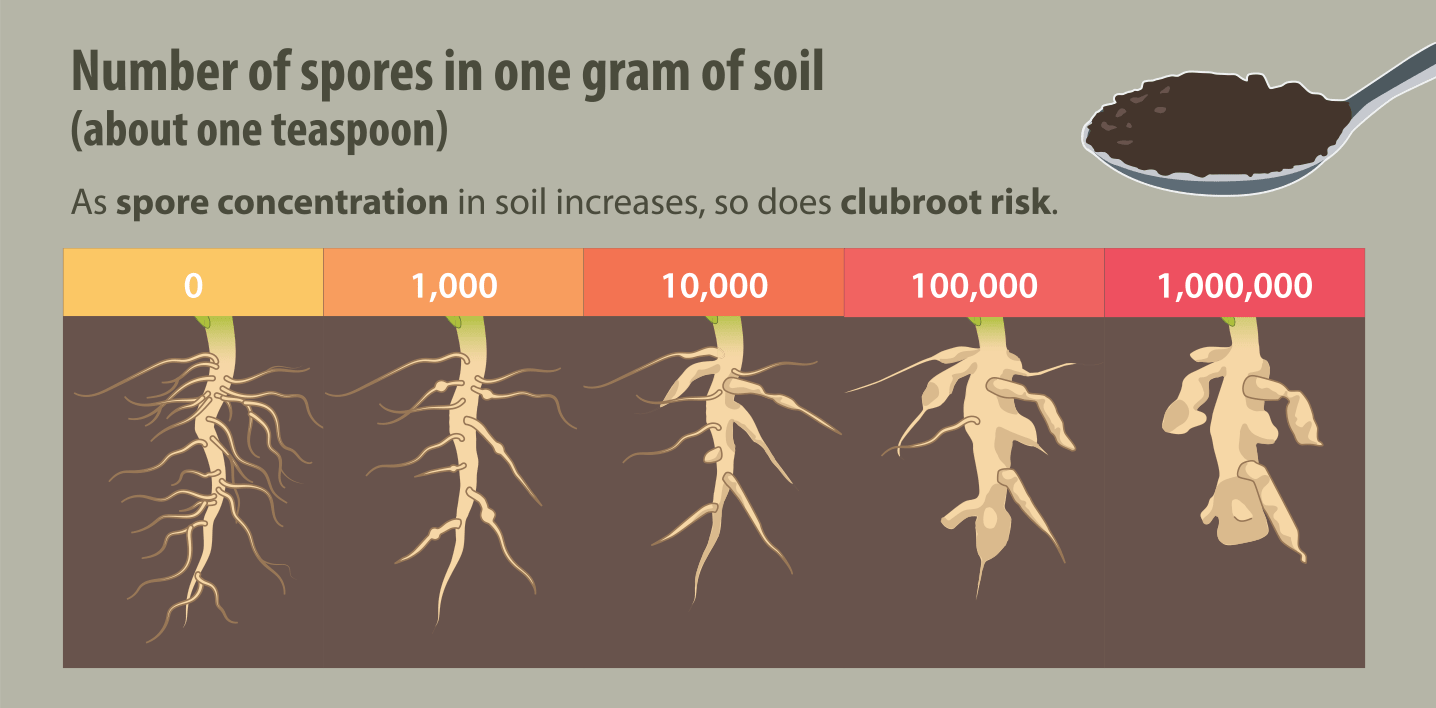Use Clubroot-Resistant Canola Early to Keep Spores Low
The Canola Council of Canada wants to see clubroot-resistant canola cultivars grown responsibly on all canola acres in Canada. Clubroot-resistance (CR) will be a standard feature on most canola hybrids by 2025, but canola growers should start to use CR and other integrated management strategies for clubroot immediately.
Planting CR cultivars before the disease gets established will help slow spore reproduction. Keeping spore concentration low helps maintain yield and protect CR traits. Growers who wait until the disease has taken hold in a field before choosing CR could be stuck with challenging levels of clubroot for a long time.
Here’s why: One clubroot gall can produce millions to billions of resting spores, and that population of spores can contain multiple Plasmodiophora brassicae pathotypes. Plasmodiophora brassicae is the pathogen that causes clubroot. First generation CR cultivars are resistant to the most common pathotypes, but if spore counts are allowed to spike, the field could already have enough of the other pathotypes to cause major clubroot outbreaks – even in CR hybrids.
This selection for virulent pathotypes is why CR should be deployed before the spore load reaches a yield-loss level. A minimum two-year break between canola crops (one in three-year rotation) also helps keep spores low and protects the CR trait from natural selection. With a two-year break between clubroot hosts, the viability of resting spores left in soil can decline to levels where the “low” objective remains manageable. (Learn more about integrated management strategies in the clubroot chapter in the Diseases section at canolaencyclopedia.ca.)
For growers in established clubroot areas, getting P. brassicae spores low and keeping them local is still a worthy objective. Fields or patches with higher spore concentrations will need a longer break between canola crops to get spores back down to a manageable level. Regular scouting will help identify these areas early, and provide options for more patch or field management practices to reduce soil movement and increase spore degradation.
Which CR hybrid to choose?
The list of CR canola cultivars, including those with base (‘first-generation’) or additional (‘second-generation’) resistance, is posted in the “Control clubroot” section of the clubroot chapter at canolaencyclopedia.ca. CR traits are available from each seed company, in all growing zones, and in any herbicide tolerance system. ‘First-generation’ resistance is a good place to start, unless you know there are resistance-breaking pathotypes in that field. ‘Second-generation’ resistance traits should be used in fields where pathotypes are breaking first-generation resistance. No CR trait is a stand-alone management practice. All canola cultivars should be grown in addition to other integrated management strategies like crop rotation, scouting and biosecurity. Canola Performance Trials include CR hybrids, and results are posted in the booklets for 2019 and 2020. Find them at canolaperformancetrials.ca.

CR associated with higher yield
Growers still on the fence about CR hybrids may find motivation from results from a recent survey. The Canola Council of Canada surveyed 1,000 canola growers last winter to identify key practices that have an impact on yield. Results show that most measures and practices strongly associated with a higher average canola yields pertain to fertilizer management and integrated pest management.
Learn more about integrated management strategies in the clubroot chapter in the Diseases section at canolaencyclopedia.ca
When asked what pests presented the greatest economic risk to their canola production, growers put flea beetles first and sclerotinia stem rot second, which isn’t really a surprise. Clubroot took third spot in north and central Alberta, and fourth spot overall. Statistical analysis of survey results showed that growers who use CR varieties also tend to be those growers with higher canola yields, particularly in the Black and Grey soil zones.
CR hybrids deployed early will help keep a lid on clubroot. And as the survey shows, canola growers who see CR hybrids as an important part of their disease management practices also tend to have higher canola yields.






